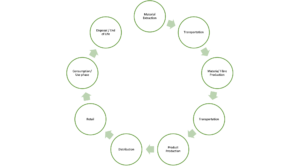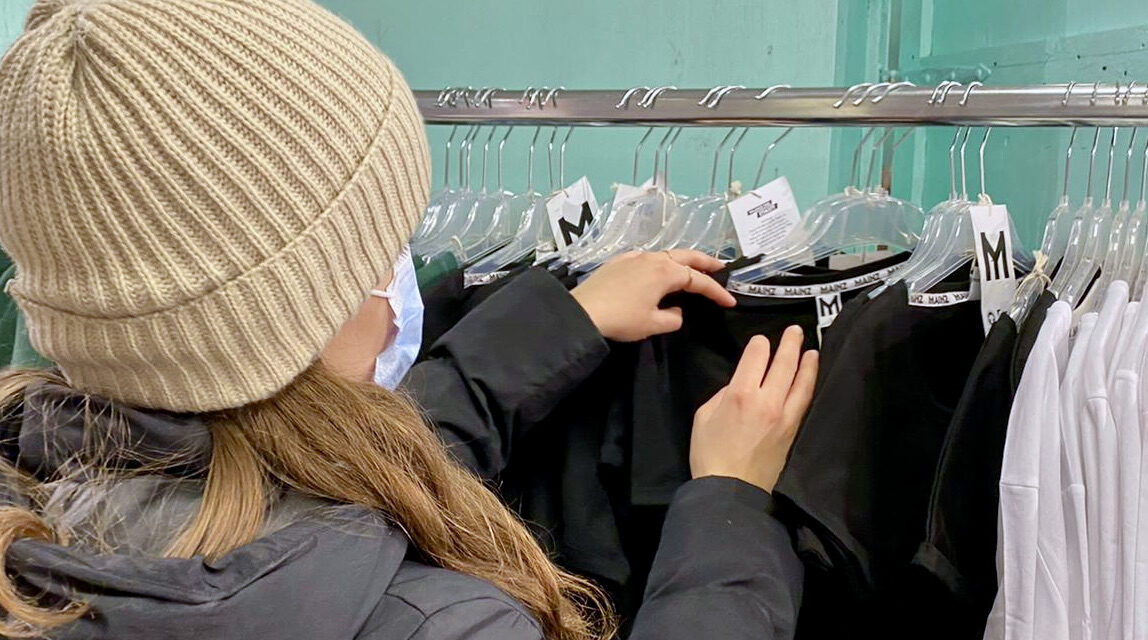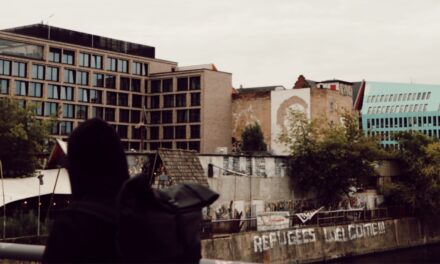“For me, buying clothes that have already been worn is not a new development. My mother started the whole thing when we were little,” says Benigna Wilms, a student from Mainz. “I do this because I am very aware of the impact that the fast fashion industry has on our environment and especially under how bad working conditions people work in clothing factories and I would like to make my small contribution by continuing to wear and use things that are already in circulation. “
The fashion industry and its consequences
The fashion industry is characterized by its changing collections. Every year, new collections, new designs, and colors appear and determine what is trendy and what is not. But not once and not twice a year new collections are released by big fashion brands, up to 24 new collections can come out within one year. What you bought today may be from the last collection tomorrow. The production of these clothes is not without consequences. The fashion industry is the second-largest industrial polluter in the world. Every year up to 10% of global greenhouse gas emissions are caused by the fashion industry. They are responsible for more annual carbon emissions than all international flights and maritime shipping combined, according to the European Parliament.
The life cycle of fast fashion
The fast-fashion industry accounts for the largest share of this. As the name suggests, this refers to clothing that is produced very quickly. At the same time, fast fashion is considered to be low-priced because less high-quality materials are used in them, which results in the price. And as fast fashion is, it is then usually used only for a short time until something new comes along. An abundance of clothing results.
The problem caused by fast fashion lies in the entire clothing cycle. According to the UK Parliament clothing that is made from polyester is derived from petroleum or coal, which is very energy-intensive and therefore harmful to the environment. Because of this, the carbon emission for polyester is about twice as high as for cotton. Another problem that arises is the damage to the environment. Chemicals and pesticides are used in the processing of cheap clothing, which can then get into the water and damage the soil. Looking for the solution in just producing clothing out of cotton is also not the right answer, because the cultivation of cotton requires much water as well, stated Professor Martina Glomb, lecturer in the Hochschule Hannover, University of Applied Sciences and Arts.
The typical product life cycle in fast fashion

Fair fashion equals not fair fashion
A supposed solution seems to be fair fashion, in which more attention is paid to the materials, the working conditions, and the longevity of the product, which may also be reflected in the price. These products can be recognized by seals of quality, but you should also be careful here, because not every seal is certified. For example, big fashion brands create their own seals in their company, which are not tested.
Caution is generally advised here because for instance the term sustainability is not legally protected, which is why it is susceptible to greenwashing. To find out whether or not the clothing is sustainable and fair fashion it is advisable to check if any official seals can guarantee this.
The way of slow fashion
Fair fashion seems to be a way in the right direction, yet for new fabrics are new garments usually produced, which again creates a burden on the environment.
The solution seems to lie in slow fashion. Slow fashion can be seen as the opposite of fast fashion, with the main aim that no harm is done to the environment with this type of fashion. According to Professor Glomb, it is a complex topic that acts on different levels. There is sustainable Production, which has the aim as reported by Professor Glomb to “keep the consumption of resources as low as possible. […] Slow fashion must not harm humans, animals, or the environment.” The other side is sustainable consumption which means getting the most out of the product so that it ends up back in the product life cycle. In general, the consumption of clothing should be conscious, and an extension of the use phase should be achieved. According to Professor Glomb, there are no 100 percent slow fashion labels, the highest they can do, is to use certain slow fashion strategies.
Oktopulli and their aim to change children’s clothing
One of these slow fashion strategies is used by Oktopulli, the growing children’s fashion from Germany. They make clothes for children from second-hand, remnants – and surplus goods, trying to be as resource-friendly as possible. These are fabrics that already exist in the world. The fabrics they use come from other labels, old collections, misproductions, and cooperations with fabric manufacturers in Germany. Sometimes the cuffs used in the production of the jumpers are an exception, as there is no second-hand market for short goods. Here, however, attention is paid to certified organic cotton, explained Nancy Frehse, managing director of Oktopulli. The whole thing is produced in a workshop in Berlin.
Oktopulli is engaging in sustainability, and this is not only limited to the materials, but also to the people who are involved, according to Frehse, “to create a humanly sustainable place of work, where people are the focus as their own resource and not just the product […] our product is our purpose, to create a place of work”. At the same time, part of the proceeds goes to the Sea-Watch organization.
Sustainability and the behavioral attitude gap
Sustainable fashion is a big buzzword these days. Sustainable, conscious living, climate, are all terms that you often hear. This is not reflected in the sales figures of the big fashion houses with fast fashion. The numbers remain constant or even increase. Professor Martina Glomb explains that with the behavioral attitude gap. Here, the behavior of an individual diverges with their attitude. “Everyone has the attitude, I am sustainable, I buy organic products, I pay attention to certification, I wear second hand. That is the attitude that everyone has. But the behavior is different. As soon as you run past a cheap shop, you take out three t-shirts. […]. That’s the reality.” The worst age group with this behavioral attitude gap are the people between 15 and 25, a contradiction in terms when you consider how many of them claim to be committed to climate and sustainability.
The own choice
Which “fashion path” is the right one for one is entirely up to you. But you should not forget that the journey of the garment does not end in the wardrobe and continues at some point. Burned, shipped, or buried, which is what happens to most garments, is not considered a sustainable way regarding the product life cycle and the environment.




